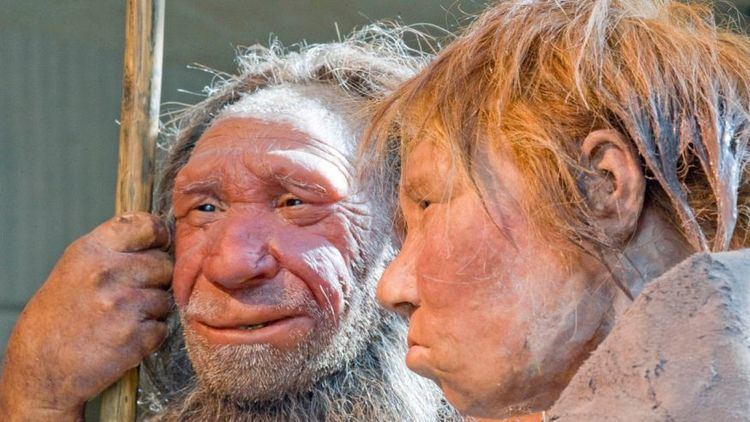 | ||
Similar Neanderthal, Anatomically modern human, Hominini, Homo heidelbergensis, Flores man | ||
The Denisovan or Denisova hominin ( /dᵻˈniːsəvə/ dɛ-NEE-sə-və) is an extinct species or subspecies of human in the genus Homo. Pending its status as either species or subspecies it currently carries the temporary name Homo sp. Altai, and Homo sapiens ssp. Denisova. In March 2010, scientists announced the discovery of a finger bone fragment of a juvenile female who lived about 41,000 years ago, found in the remote Denisova Cave in the Altai Mountains in Siberia, a cave that has also been inhabited by Neanderthals and modern humans. Two teeth belonging to different members of the same population have since been reported. In November 2015, a tooth fossil containing DNA was reported to have been found and studied. A bone needle dated to 50,000 years ago was discovered at the archaeological site in 2016 and is described as the oldest needle known.
Contents
- 3 new facts about denisovans
- Discovery
- Fossils
- Anatomy
- Mitochondrial DNA analysis
- Nuclear genome analysis
- Epigenetics
- Interbreeding
- References
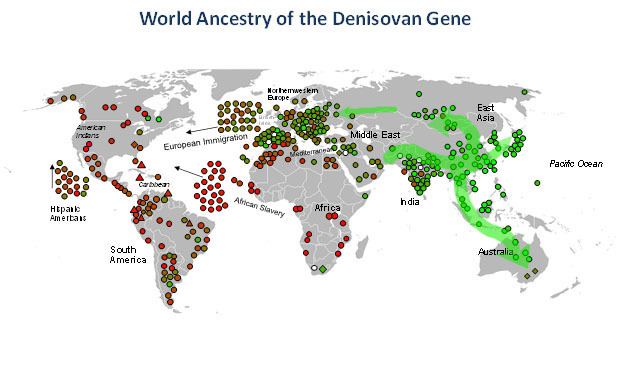
Analysis of the mitochondrial DNA (mtDNA) of the finger bone showed it to be genetically distinct from the mtDNAs of Neanderthals and modern humans. Subsequent study of the nuclear genome from this specimen suggests that Denisovans shared a common origin with Neanderthals, that they ranged from Siberia to Southeast Asia, and that they lived among and interbred with the ancestors of some modern humans, with about 3% to 5% of the DNA of Melanesians and Aboriginal Australians deriving from Denisovans.

A comparison with the genome of a Neanderthal from the same cave revealed significant local interbreeding with local Neanderthal DNA representing 17% of the Denisovan genome, while evidence was also detected of interbreeding with an as yet unidentified ancient human lineage. Similar analysis of a toe bone discovered in 2011 is underway, while analysis of DNA from two teeth found in layers different from the finger bone revealed an unexpected degree of mtDNA divergence among Denisovans.
In 2013, mitochondrial DNA from a 400,000-year-old hominin femur bone from Spain, which had been seen as either Neanderthal or Homo heidelbergensis, was found to be closer to Denisovan mtDNA than to Neanderthal mtDNA.
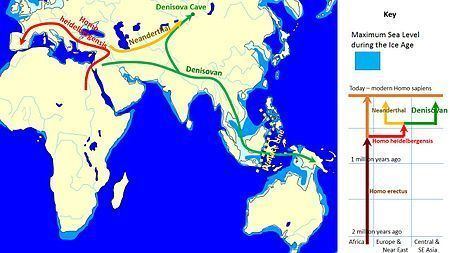
3 new facts about denisovans
Discovery
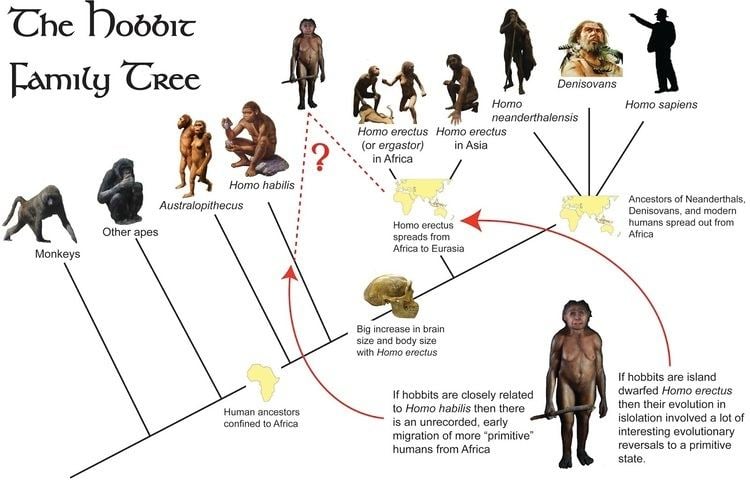
The Denisova Cave is located in south-western Siberia, in the Altai Mountains near the border with China and Mongolia. It is named after Denis, a Russian hermit who lived there in the 18th century. The cave was originally explored in the 1970s by Russian paleontologist Nikolai Ovodov, who was looking for remains of canids. In 2008, Michael Shunkov from the Russian Academy of Sciences and other Russian archaeologists from the Institute of Archaeology and Ethnology of Novosibirsk investigated the cave. They found the finger bone of a juvenile hominin, known as both the "X woman" (referring to the maternal descent of mitochondrial DNA), and the Denisova hominin. Artifacts (including a bracelet) excavated in the cave at the same level were dated using radiocarbon and oxygen isotopes to around 40,000 BP. Excavations have since revealed human artifacts showing an intermittent presence going back 125,000 years.
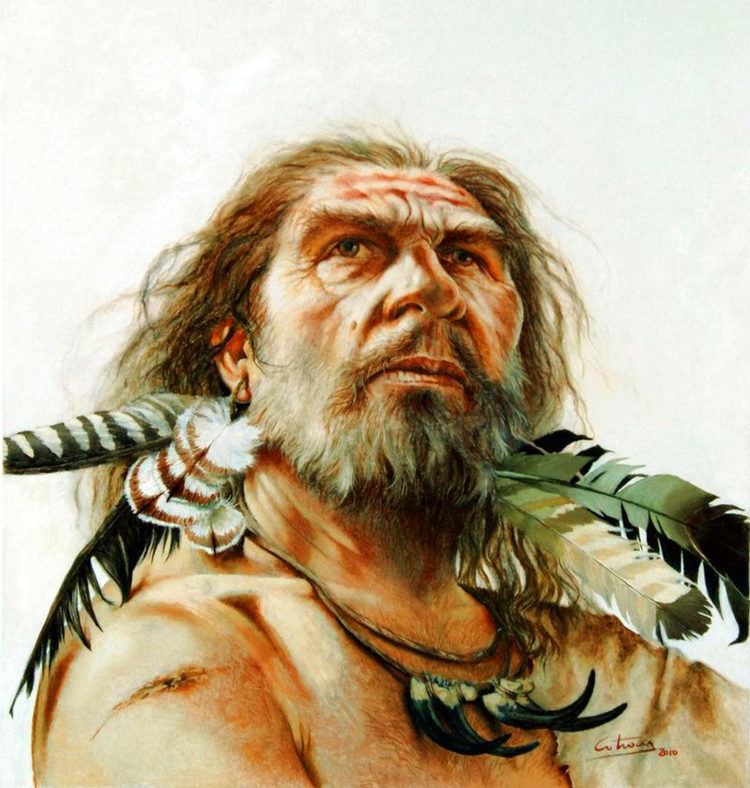
A team of scientists led by Johannes Krause and Svante Pääbo from the Max Planck Institute for Evolutionary Anthropology in Leipzig, Germany, Sequenced mtDNA extracted from the fragment. The cool climate of the Denisova Cave preserved the DNA. The average annual temperature of the cave is 0 °C, which has contributed to the preservation of archaic DNA among the remains discovered. The analysis indicated that modern humans, Neanderthals, and the Denisova hominin last shared a common ancestor around 1 million years ago.

The mtDNA analysis further suggested that this new hominin species was the result of an earlier migration out of Africa, distinct from the later out-of-Africa migrations associated with modern humans, but also distinct from the earlier African exodus of Homo erectus. Pääbo noted that the existence of this distant branch creates a much more complex picture of humankind during the Late Pleistocene. This work shows that the Denisovans were actually a sister group to the Neanderthals, branching off from the human lineage 600,000 years ago, and diverging from Neanderthals, probably in the Middle East, 200,000 years later.
Later in 2010, a second paper from the Svante Pääbo group reported the prior discovery, in 2000, of a third upper molar from a young adult, dating from about the same time (the finger was from level 11 in the cave sequence, the tooth from level 11.1). The tooth differed in several aspects from those of Neanderthals, while having archaic characteristics similar to the teeth of Homo erectus. They performed mitochondrial DNA analysis on the tooth and found it to have a sequence different from but similar to that of the finger bone, indicating a divergence time about 7,500 years before, and suggesting that it belonged to a different individual from the same population.
Fossils
So far, the fossils of three distinct Denisovans from Denisova Cave have been identified through their DNA: Denisova 3, Denisova 4, and Denisova 8. Denisova 3 is a young girl, while Denisova 4 and Denisova 8 are adult males.
During DNA sequencing, Denisova 4 and Denisova 8 yielded low-coverage genomes, while Denisova 3 yielded high-coverage genome.
Anatomy
Little is known of the precise anatomical features of the Denisovans, since the only physical remains discovered thus far are the finger bone, two teeth from which genetic material has been gathered and a toe bone. The single finger bone is unusually broad and robust, well outside the variation seen in modern people. Surprisingly, it belonged to a female, indicating that the Denisovans were extremely robust, perhaps similar in build to the Neanderthals. The tooth that has been characterized shares no derived morphological features with Neanderthal or modern humans. An initial morphological characterization of the toe bone led to the suggestion that it may have belonged to a Neanderthal-Denisovan hybrid individual, although a critic suggested that the morphology was inconclusive. This toe bone's DNA was analyzed by Pääbo. After looking at the full genome, Pääbo and others confirmed that humans produced hybrids with Denisovans.
Some older finds may or may not belong to the Denisovan line. These include the skulls from Dali and Maba, and a number of more fragmentary remains from Asia. Asia is not well mapped with regard to human evolution, and the above finds may represent a group of "Asian Neanderthals".
Mitochondrial DNA analysis
The mtDNA from the finger bone differs from that of modern humans by 385 bases (nucleotides) in the mtDNA strand out of approximately 16,500, whereas the difference between modern humans and Neanderthals is around 202 bases. In contrast, the difference between chimpanzees and modern humans is approximately 1,462 mtDNA base pairs. This suggested a divergence time around one million years ago. The mtDNA from a tooth bore a high similarity to that of the finger bone, indicating that they belonged to the same population. From a second tooth, an mtDNA sequence was recovered that showed an unexpectedly large number of genetic differences compared to that found in the other tooth and the finger, suggesting a high degree of mtDNA diversity. These two individuals from the same cave showed more diversity than seen among sampled Neanderthals from all of Eurasia, and were as different as modern-day humans from different continents.
Nuclear genome analysis
In the same second 2010 paper, the authors reported the isolation and sequencing of Nuclear DNA from the Denisova finger bone. This specimen showed an unusual degree of DNA preservation and low level of contamination. They were able to achieve near-complete genomic sequencing, allowing a detailed comparison with Neanderthal and modern humans. From this analysis, they concluded, in spite of the apparent divergence of their mitochondrial sequence, that the Denisova population shared a common branch with Neanderthals from the lineage leading to modern African humans. The estimated average time of divergence between Denisovan and Neanderthal sequences is 640,000 years ago, and the time between both of these and the sequences of modern Africans is 804,000 years ago. They suggest that the divergence of the Denisova mtDNA results either from the persistence of a lineage purged from the other branches of humanity through genetic drift or else an introgression from an older hominin lineage.
In 2013, the mtDNA sequence from the femur of a 400,000 year old Homo heidelbergensis from the Sima de los Huesos Cave (Atapuerca Mountains) in Spain was found to be related to that of the Neanderthals and the Denisovans, but closer to the latter. Ian Tattersall argues that the finding suggests that some fossils identified morphologically as Neanderthal may in fact be closer to the Denisovans. But recent analysis of nuclear DNA sequences from two specimens contradicts this in showing that the Sima de los Huesos hominins were related to Neanderthals rather than to Denisovans.
Epigenetics
In April 2014, a first glimpse into the epigenetics of the Denisovan was gained with the publication of the full DNA methylation of the Denisovan and the Neanderthal. The reconstructed DNA methylation map allowed researchers to assess gene activity levels throughout the Denisovan genome and compare them to modern humans and to the Neanderthal. The reconstruction was possible thanks to the natural degradation processes of Ancient DNA, which leave different signals on methylated vs. unmethylated regions of the genome. The study found ≈200 genes that show distinct regulatory patterns in the Denisovan.
Interbreeding
A detailed comparison of the Denisovan, Neanderthal, and human genomes has revealed evidence for a complex web of interbreeding among the lineages. Through such interbreeding, 17% of the Denisova genome represents DNA from the local Neanderthal population, while evidence was also found of a contribution to the nuclear genome from an ancient hominin lineage yet to be identified, perhaps the source of the anomalously ancient mtDNA.
8% of the Denisovan genome is derived from interbreeding with mysterious unknown species from Asia one million years ago, which are neither human nor Neanderthal. These unknown groups from Asia and Africa left genes in Denisovans and Homo Sapiens, respectively.
Analysis of genomes of modern humans show that they mated with at least two groups of ancient humans: Neanderthals (more similar to those found in the Caucasus than those from the Altai region) and Denisovans. Approximately 4% of the DNA of non-African modern humans is shared with Neanderthals, suggesting interbreeding. Tests comparing the Denisova hominin genome with those of six modern humans – a ǃKung from South Africa, a Nigerian, a Frenchman, a Papua New Guinean, a Bougainville Islander and a Han Chinese – showed that between 4% and 6% of the genome of Melanesians (represented by the Papua New Guinean and Bougainville Islander) derives from a Denisovan population; a later study puts the amount at 1.11% (with an additional contribution from some different and yet unknown ancestor) This DNA was possibly introduced during the early migration to Melanesia. These findings are in concordance with the results of other comparison tests which show a relative increase in allele sharing between the Denisovan and the Aboriginal Australian genome, compared to other Eurasians and African populations; however, it has been observed that Papuans, the population of Papua New Guinea, have more allele sharing than Aboriginal Australians.
Melanesians are not the only modern-day descendants of Denisovans. David Reich of Harvard University, in collaboration with Mark Stoneking of the Planck Institute team, found genetic evidence that Denisovan ancestry is shared by Melanesians, Australian Aborigines, and smaller scattered groups of people in South-East Asia, such as the Mamanwa, a Negrito people in the Philippines. However, not all Negritos were found to possess Denisovan genes; Onge Andaman Islanders and Malaysian Jehai, for example, were found to have no significant Denisovan inheritance. These data place the interbreeding event in mainland South-East Asia, and suggest that Denisovans once ranged widely over eastern Asia. Based on the modern distribution of Denisova DNA, Denisovans may have crossed the Wallace Line, with Wallacea serving as their last refugium. A paper by Kay Prüfer in 2013 said that mainland Asians and Native Americans had around 0.2% Denisovan ancestry.
The immune system's HLA alleles have drawn particular attention in the attempt to identify genes that may derive from archaic human populations. Although not present in the sequenced Denisova genome, the distribution pattern and divergence of HLA-B*73 from other HLA alleles has led to the suggestion that it introgressed from Denisovans into humans in west Asia. Indeed, half of the HLA alleles of modern Eurasians represent archaic HLA haplotypes, and have been inferred to be of Denisovan or Neanderthal origin. The apparent over-representation of these alleles suggests a positive selective pressure for their retention in the human population. A higher quality Denisovan genome published in 2012 reveals variants of genes in humans that are associated with dark skin, brown hair and brown eyes - consistent with features found with Melanesians today.
It has been suggested, in the absence of genomic evidence (as of 2013), that the red deer Cave people of China were the result of interbreeding between Homo sapiens and Denisovans within a few thousands years of the end of the last glacial period.
There is evidence of a minimum 0.5% Neanderthal gene flow into the Denisovans. The Denisovan genome shared more derived alleles with the Altai Neanderthal genome from Siberia than with the Vindija Cave Neanderthal genome from Croatia and the Mezmaiskaya cave Neanderthal genome from the Caucasus, suggesting that the gene flow came from a population that was more closely related to the Altai Neanderthal.
It has also been observed that the Denisovan genome includes a component derived from an unknown hominin that diverged long before the modern human/Neanderthal/Denisovan separated, suggesting a possible gene flow from said unknown hominin to Denisovans or a population sub-structure.
Tibetans have a region of DNA, haplotype, around the EPAS1 gene that assists with adaptation to low oxygen levels at high altitude. According to a study published in Nature in July 2014, this region is also found in the Denisovan genome. The study involved subjects of Han Chinese and Tibetan ethnic backgrounds—40 subjects from each group. EPAS1 gene served as a reference point for where to sequence the DNA of the 80 subjects.
Studies published in March 2016 suggest that modern humans bred with hominins, including Denisovans and Neanderthals, on multiple occasions.
